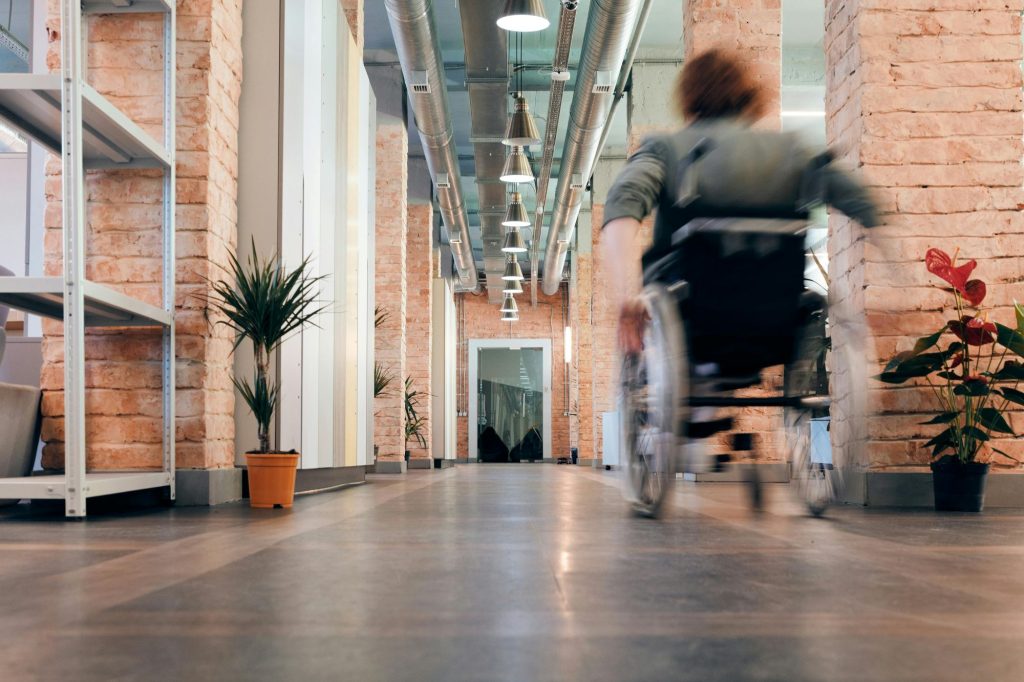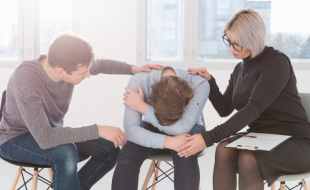Table Of Contents
- 1. Skipping Or Fudging The Sweep/Maintenance Log
- Savvy Tip
- 2. Failing To Preserve Video Or Camera Footage
- 3. Underestimating The Role Of “Trip And Fall Lawyer” In Claim Value
- ● Lost wage projections over many years
- ● Future medical needs
- ● Pain and suffering multipliers
- ● Emotional distress claims
- 4. Leaving Wet Floors Unmarked Or Taking Too Long To Clean
- 5. Delayed Cleanup Or Response Timing
- 6. Poor Training Or No Protocol For New Risks
- 7. Bad Lighting, Dark Corners, Uneven Mats
- 8. Overlooked ADA & Accessibility Obstacles
- 9. Blaming The Customer Without Evidence
- 10. Delayed Notice To Insurer / Poor Incident Reporting
- Final Word
10 Costly Slip And Fall Mistakes Businesses Make
Almost all slip and fall incidents today can drain your business’s funds faster than you think. Recent studies even reveal that in the U.S. alone, over a million people visit emergency rooms every year for these accidents, with businesses spending thousands per incident. Often, one small oversight can throw you into legal battles, insurance hikes, and reputation compromise.
Here’s how businesses usually slip up—and how you can avoid it fast.
1. Skipping Or Fudging The Sweep/Maintenance Log
You might tell your team to “sweep and clean up,” but without a written, time-stamped sweep or inspection log, your defense can be declared weak. This becomes a plaintiff’s opportunity to argue that you lacked a formal system and that hazards may have lingered unseen, causing the slip.
Savvy Tip
You may need to employ digital logs or mobile apps so that each inspection, spill, or hazard is recorded with time, staff name, and corrective measures. When you can’t produce logs under subpoena, jurors may infer you’re negligent and liable.
2. Failing To Preserve Video Or Camera Footage
When you’ve captured on cam a mishap, you need to preserve everything; deleting or overwriting it, especially if they’re relevant to a slip or trip, you might risk being accused of evidence spoliation. That’s why, after any incident, flag and freeze your surveillance footage for at least the statute-of-limitations period according to your state laws.
3. Underestimating The Role Of “Trip And Fall Lawyer” In Claim Value
Wherever your business operates, one of the most leveraged strategies plaintiffs use is the threat or involvement of a trip and fall lawyer, of which expertise you can also avail yourself. This way, your attorney can walk you through typical recoverable damages, precedents in your region, or negotiating tactics that help you win your defense.
In particular, your legal expert can push aggressively on these fronts, like:
● Lost wage projections over many years
● Future medical needs
● Pain and suffering multipliers
● Emotional distress claims
If you haven’t baked in defense readiness for those angles and defensible counterarguments, you risk overpaying and rocking your financial boat.
4. Leaving Wet Floors Unmarked Or Taking Too Long To Clean
Your customer spills coffee or your staff mops without signage? That’s a classic neglect. Many cases hinge on whether the hazard was open and obvious or whether a reasonable firm would have known of these little incidents.
In today’s social media consciousness, it’s easy for plaintiffs to post and point to “unmarked wet floors” as proof that you failed a basic duty or response. Also, even if you used signs, but they’re faded, placed too far, or in the wrong spot, they may not be appreciated later in court.
That’s why you need to make your warning signs brighter, making them more obvious, before and during cleanup, so people can never say it’s unnoticeable. Also, train your staff to cordon off the area physically if their cleanup is ongoing to avoid any trip.
5. Delayed Cleanup Or Response Timing
Even if you’ve gone through a thorough or flawless cleanup, this can mean little if you delay reporting any accident. More often, late notice can void insurance coverage or cripple your advantages during negotiations.
So, protect your business with a clear 24-hour incident alert protocol—report every injury fast, gather witness statements, photos, and loss assessments, and alert your legal, risk, and insurance teams before evidence or credibility fades away.
6. Poor Training Or No Protocol For New Risks
You may have a general “clean & inspect” protocol, but is your staff trained on seasonal hazards, shifted surfaces, or new flooring policies? Do they know what to check under LED lighting or near mat edges? Most often, plaintiffs’ lawyers can dig into your training records (or, for lack of it). That’s why, if you don’t have documented refresher training or audits, they’ll argue your protocols weren’t routine but occasional or just cosmetic.
Building scenario-based training modules, like “what to do if a drink spills during lunch rush,” “rainy days at the entrance,” and other emergency scenarios, you shape a responsive team.
7. Bad Lighting, Dark Corners, Uneven Mats
While you assumed that everything else is perfect, you lose if a customer trips in a dark corner or over a warped mat going to your restroom. Often, poor lighting hides tripping hazards, like mats or rugs that can curl or bunch and cause danger zones.
Today, some modern tools, like thermal imagers, can help you and your crew detect hidden wet spots or condensation before they cause a slip or fall. You may also walk through your premises in low hours to see blind spots, if any.
8. Overlooked ADA & Accessibility Obstacles

Some considered accessible designs are not just for compliance; they’re actually risk mitigation. A ramp step, a slight lip at a door, or a pathway narrow by decorative fixtures can cause someone using a cane or walker to trip and fall.
Most plaintiffs often combine slip/trip cases with ADA violations (in jurisdictions that allow such crossover). You don’t want some bad lighting claim to be paired with any accessibility violation that could increase your liability.
That’s why you need to always include property audits by an authorized ADA specialist or competent reviewer, so you can fix even minor accessibility issues before they drag you into lawsuit headaches.
9. Blaming The Customer Without Evidence
Your instinct might be to say “they weren’t paying attention,” “they wore bad shoes,” or “it was their fault.” But this might even backfire and increase your liability, unless you have clear evidence or a credible expert report to rely upon. More often, juries distrust defendant blame narratives if they seem speculative or victim-shaming accounts.
So, if you want to counterclaim contributory fault, document things like witness statements, footwear photos (if available), and path of travel markings you’ve installed. Don’t rely on vague assumptions or conclusions.
10. Delayed Notice To Insurer / Poor Incident Reporting
Even if you handle cleanup perfectly, failing to report a slip or fall incident to your insurer promptly can void your coverage or weaken any negotiating position you might have had. Also, internal incident reports must be timely, accurate, and stored securely to avoid spoilage.
You can actually build a “24-hour incident alert” protocol: once any bodily injury is reported, notify legal, risk, and insurance teams right away. This may include internal incident reports, photos, witness statements, and early damage/loss assessments from your trusted team.
Final Word
You cannot afford to treat slip and fall risk as your adversaries’ routine liability line item poking you every now and then.
Each mistake you read here is not just a procedural lapse — it’s a door opening for high-stakes litigation. But if you act methodically (and precisely each time), you turn many of these hazards into your firm’s strengths.
They’re the insights that can turn costly mistakes into strategic resilience as your business grows.















